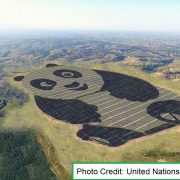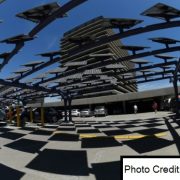By Jocelyne Zablit
July 2, 2017
Read the original article Here
Jacquie Barnbrook had grown tired of the high electricity bills and her gas-guzzling luxury car when she finally decided to take the plunge last year.
The 52-year-old Los Angeles resident joined an ever-growing number of Californians who are switching to solar power for their energy needs in a bid to not only save money but to also do their part for the environment in a state setting the pace for the rest of the country in that sector.
“At this time of year, my power and water bills usually were around $400 a month,” Barnbrook said. “Right now, it’s $150 a month.”
As for her vehicle, Barnbrook said she ditched it in favor of a hybrid one that she now plugs in and charges at her house.
“I was previously spending $80 dollars on gas every three or four days and now I haven’t put gas in my new car since the beginning of March,” she noted.
“That’s four months ago!”
Nearly 4.9 million homes are powered by solar energy in California—the nation’s green trailblazer and the most populous state—and that number is expected to continue to grow, according to the Solar Energy Industries Association, a non-profit trade association.
Even President Donald Trump, an avowed sceptic on climate change, is considering putting solar panels on the wall he plans to build on the Mexican border.
Snake oil
Although solar installations have slowed this year due, in part, to a record number of people rushing to sign up in 2016 for fear of losing a tax incentive, the market is expected to continue to grow, especially in places like California which has a plethora of sunny days, experts say.
Driving this expansion is the plummeting cost of solar panels—which were traditionally limited to relatively affluent homeowners—and improving technology on batteries to store energy, they add.
“Right now, we’re in throes of rapid change in the solar industry,” said Rajit Gadh, director of the UCLA Smart Grid Energy Research Center. “As people process all the information out there and report their success stories and it starts to become mainstream … the momentum will grow.”
He said apart from cost, another reason average consumers have gingerly adopted solar power in recent years was the dizzying number of regulatory hoops they had to go through to get approval from utility companies and a lot of complicated information to process.
Moreover, as demand for the product has surged in the last decade, so have the number of companies—both serious and shady—jostling for a piece of the pie.
“Solar power is confusing and for a long time it really didn’t make a lot of economic sense,” said Ryan Willemsen, CEO and founder of the San Diego-based start-up Solar to the People.
“In California, solar is really getting a snake oil reputation because of some of the unscrupulous folks involved who are pushing solar super hard,” he added. “In San Diego alone, for example, there are over 200 solar operations.”
Ara Petrosyan, CEO and founder of LA Solar Group, a consulting firm, said he believes that once the dust settles and shady companies inevitably go out of business, consumers will be able to make more informed and affordable choices and the sector will take off like “a rocket ship.”
“In five years, so many rules and regulations have been added that you have to be a really good expert to stay in the business,” he said.
He added that a clear sign of where the industry is going is the number of installations—which cost between $15,000 and $20,000 for an average size house—his company is handling.
“When we started in 2012, we did about 10 installations a month,” Petrosyan said. “Today, we do about 120 a month … and it will definitely keep increasing.”
Such projections are good news for a state that has mandated that 50 percent of its electricity come from renewable energy sources, including solar, by 2030.
Solar power is also growing fast in other states, including New York, which look to California as an example.
“The overall industry trend is that the cost of solar panels and other components is going down,” said Willemsen.
“And more and more standard folks are hearing it’s a good idea and once one person in the neighborhood goes solar, more and more follow.”




